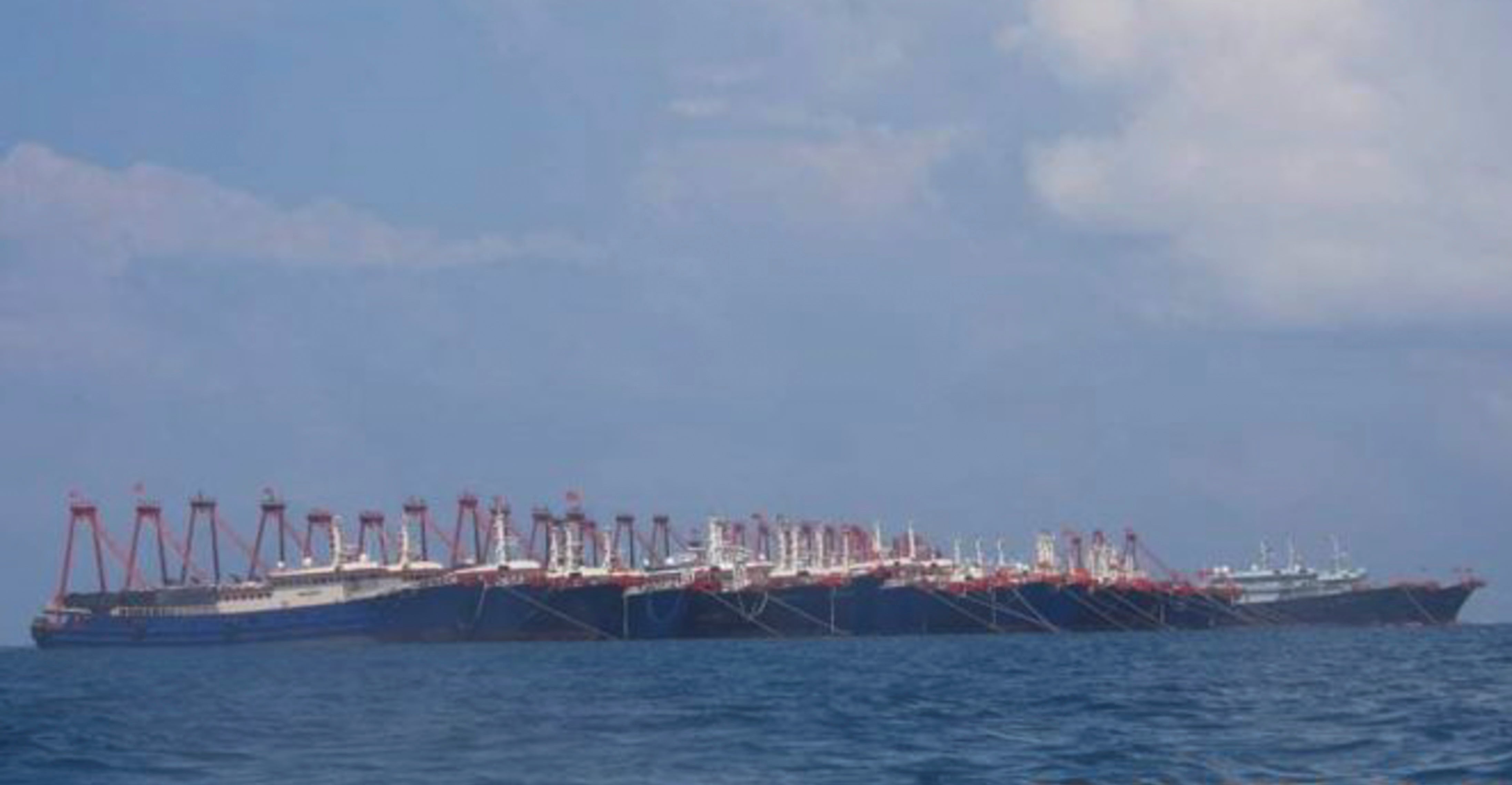US backs Philippines in standoff over South China Sea reef
The United States is backing the Philippines in a new standoff with Beijing in the South China Sea, where Manila has asked a Chinese fishing flotilla to leave a reef

Your support helps us to tell the story
From reproductive rights to climate change to Big Tech, The Independent is on the ground when the story is developing. Whether it's investigating the financials of Elon Musk's pro-Trump PAC or producing our latest documentary, 'The A Word', which shines a light on the American women fighting for reproductive rights, we know how important it is to parse out the facts from the messaging.
At such a critical moment in US history, we need reporters on the ground. Your donation allows us to keep sending journalists to speak to both sides of the story.
The Independent is trusted by Americans across the entire political spectrum. And unlike many other quality news outlets, we choose not to lock Americans out of our reporting and analysis with paywalls. We believe quality journalism should be available to everyone, paid for by those who can afford it.
Your support makes all the difference.The United States said Tuesday it’s backing the Philippines in a new standoff with Beijing in the disputed South China Sea, where Manila has asked a Chinese fishing flotilla to leave a reef. China ignored the call, insisting it owns the offshore territory.
The U.S. Embassy said it shared the concerns of the Philippines and accused China of using “maritime militia to intimidate, provoke, and threaten other nations, which undermines peace and security in the region.”
“We stand with the Philippines, our oldest treaty ally in Asia,” the U.S. Embassy in Manila said in a statement.
Philippine Defense Secretary Delfin Lorenzana on Sunday demanded about 200 Chinese vessels he said were militia boats leave the Whitsun Reef, a shallow coral region about 175 nautical miles (324 kilometers) west of Bataraza town in the western Philippine province of Palawan.
Philippine officials said the reef, which they call Julian Felipe, is well within the country’s internationally recognized exclusive economic zone, over which the Philippines “enjoys the exclusive right to exploit or conserve any resources.”
The Philippine coast guard spotted about 220 Chinese vessels moored at the reef, which Beijing and Vietnam also claim, on March 7.
On Monday, a surveillance aircraft spotted 183 Chinese vessels still at the reef, said Philippine military chief Lt. Gen. Cirilito Sobejana, who released aerial pictures of the Chinese vessels in one of the most hotly contested regions in the strategic waterway.
The Philippines has filed a diplomatic protest over the Chinese presence, Foreign Secretary Teodoro Locsin Jr. said.
China insisted it owns the reef, which it calls Niué Jiao, and said the Chinese vessels converged in the area to avoid rough waters.
Beijing denied the vessels were maritime militias. “Any speculation in such helps nothing but causes unnecessary irritation,” the Chinese Embassy said in a statement on Monday. “It is hoped that the situation could be handled in an objective and rational manner.”
The U.S. Embassy, however, said “Chinese boats have been mooring in this area for many months in ever increasing numbers, regardless of the weather.”
China, the Philippines, Vietnam, Malaysia, Taiwan and Brunei have been locked in a tense territorial standoff over the resource-rich and busy waterway for decades.
President Rodrigo Duterte would talk to the Chinese ambassador in Manila about the issue, his spokesman, Harry Roque told a news conference.
Duterte has nurtured friendly ties with Beijing since taking office in 2016 and has been criticized for not immediately demanding Chinese compliance with an international arbitration ruling that invalidated Beijing’s historic claims to virtually the entire sea. China has refused to recognize the 2016 ruling, which it called “a sham,” and continues to defy it.
Duterte has sought infrastructure funds, trade and investments from China, which has also donated and pledged to deliver more COVID-19 vaccines as the Philippines faces an alarming spike in coronavirus infections.